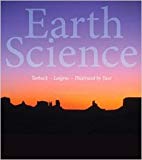
a.
Whether the atmosphere is mostly transparent or mostly opaque to visible light by referring Figure 23.20.
a.
Answer to Problem 1GST
The atmosphere is mostly transparent for visible light.
Explanation of Solution
Light has behaved like waves in some instances, and it is illustrated by wavelength; Wavelength is the distance between one wave crest to next wave crest.
The primary characterization of all electromagnetic radiation can be defined as the basis of visible light. This is the only tiny band of electromagnetic radiation that humans can see. This range of light is known as white light in astronomer’s society, and white light has a wide range of colors, starting from short-wavelength violet to long-wavelength red.
b.
Whether the atmosphere is mostly transparent or mostly opaque to radio waves with a wavelength of 1 meter.
b.
Answer to Problem 1GST
Therefore, atmosphere is mostly transparent to the radio wave with 1-meter wavelength.
Explanation of Solution
Radio telescopes are used to detect the invisible radio waves by using big dishes. The parabolic shaped dish of a radio telescope act like a mirror of an optical microscope, and the incoming radio waves are collected by using a secondary reflector and the signals are transmitted to a receiver. The wavelength of a radio wave is 10000 times longer than the visible light.
The long radio waves from celestial objects readily comes through the Earth’s atmosphere, most of the astronomical studies are based on radio waves that work on ground. The space-based radio wave telescopes detect very long radio waves and give good extraordinary resolution images. The space-based radio wave telescopes are also capable of detecting microwaves.
c.
Whether the atmosphere is mostly transparent or mostly opaque to gamma rays.
c.
Answer to Problem 1GST
Therefore, the atmosphere is mostly opaque to the short wave gamma rays.
Explanation of Solution
The telescopes on the Earth’s surface also face some problems such as, they can only observe on cloudless night and the light interference from city lights make it tough. More importantly, the advanced telescopes located in the mountaintops still face the blurring effects of atmospheric turbulence.
Want to see more full solutions like this?
Chapter 23 Solutions
Earth Science
 Applications and Investigations in Earth Science ...Earth ScienceISBN:9780134746241Author:Edward J. Tarbuck, Frederick K. Lutgens, Dennis G. TasaPublisher:PEARSON
Applications and Investigations in Earth Science ...Earth ScienceISBN:9780134746241Author:Edward J. Tarbuck, Frederick K. Lutgens, Dennis G. TasaPublisher:PEARSON Exercises for Weather & Climate (9th Edition)Earth ScienceISBN:9780134041360Author:Greg CarbonePublisher:PEARSON
Exercises for Weather & Climate (9th Edition)Earth ScienceISBN:9780134041360Author:Greg CarbonePublisher:PEARSON Environmental ScienceEarth ScienceISBN:9781260153125Author:William P Cunningham Prof., Mary Ann Cunningham ProfessorPublisher:McGraw-Hill Education
Environmental ScienceEarth ScienceISBN:9781260153125Author:William P Cunningham Prof., Mary Ann Cunningham ProfessorPublisher:McGraw-Hill Education Earth Science (15th Edition)Earth ScienceISBN:9780134543536Author:Edward J. Tarbuck, Frederick K. Lutgens, Dennis G. TasaPublisher:PEARSON
Earth Science (15th Edition)Earth ScienceISBN:9780134543536Author:Edward J. Tarbuck, Frederick K. Lutgens, Dennis G. TasaPublisher:PEARSON Environmental Science (MindTap Course List)Earth ScienceISBN:9781337569613Author:G. Tyler Miller, Scott SpoolmanPublisher:Cengage Learning
Environmental Science (MindTap Course List)Earth ScienceISBN:9781337569613Author:G. Tyler Miller, Scott SpoolmanPublisher:Cengage Learning Physical GeologyEarth ScienceISBN:9781259916823Author:Plummer, Charles C., CARLSON, Diane H., Hammersley, LisaPublisher:Mcgraw-hill Education,
Physical GeologyEarth ScienceISBN:9781259916823Author:Plummer, Charles C., CARLSON, Diane H., Hammersley, LisaPublisher:Mcgraw-hill Education,





